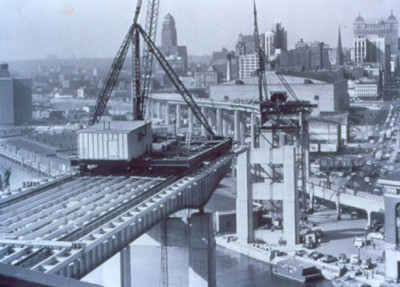The City of Buffalo began as a small village located at the nexus of the Buffalo River and Lake Erie. This natural harbor eventually became home to the historic western terminus one of our country's greatest engineering achievements, the Erie Canal. The opening of the canal is considered to be the principal driver behind Buffalo’s explosive growth in the mid-to-late 19th and early 20th centuries.
Construction of the Erie Canal in 1825 established an all-water passage from the Great Lakes through Buffalo to the port of New York City and the world, transforming Buffalo from a frontier village into a thriving commercial and industrial metropolis. At the canal's western terminus, Buffalo grew as the portal of transshipment to and from the American Midwest, transferring goods and passengers between canal boats and lake ships. At the eastern end New York grew to become the continent's financial and commercial center.
On opening day, then Governor DeWitt Clinton collected water at the confluence of the Buffalo River and Commercial Slip (a feeder canal connecting the Erie Canal with the Buffalo Harbor) that he later poured into New York Harbor in the famous "Wedding of the Waters" ceremony.
For most of the 19th century, Buffalo's canal district stood at the center of the city's growth and development, the fulcrum between canal and lake. Commercial Slip and Central Wharf were key locations within the canal district. Influenced by the flow of goods, people, and ideas, a port culture emerged among the Slips, wharves, grain elevators, warehouses, businesses, saloons, shops, residences, and hotels of the canal district. This port culture was instrumental in shaping the character of Buffalo. In the late 19th century, railroads became increasingly dominant, supplanting the canal in their economic importance to the city.
Buffalo’s outer harbor also played a significant role in the city’s history. Located just outside of Erie Canal Harbor on the banks of Lake Erie, this area became home to countless “heavy-manufacturers” producing cement, copper, steel, and other important materials that fueled the rapid growth of America. These factories also provided an abundance of good paying blue-collar jobs, which forged the hard-working culture and down-to-earth disposition of the region and its residents.
Fore more info visit - http://www.eriecanalharbor.com

